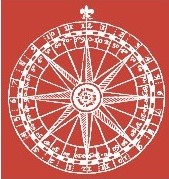Crime and the Road: A Survey of Sixteenth-Century Travel Journals
This article is a journey through the lesser known travel diaries of the sixteenth and seventeenth centuries. Its intent is to underline the occurence of violent images along the European roads, particularly in Italy, Spain, France, and England.…
Listado en Article | publicación de grupo Iter Community
Versión 1.0 - publicado en 11 Sep 2025
Licencia Creative Commons BY-NC 4.0
Descripción
This article is a journey through the lesser known travel diaries of the sixteenth and seventeenth centuries. Its intent is to underline the occurence of violent images along the European roads, particularly in Italy, Spain, France, and England. Criminality, danger, and violence are all common phenomenons in the Renaissance. Travelling allows one to discover the foreign but not without hardship: avoiding bandit and corsair traps, travellers are then welcomed at the entrance of the cities by gallows adorned with corpses and are entertained, if they so desire, with executions and autodafés. Travel literature depicts a violent and bloody Renaissance.
Cita este trabajo
Los investigadores deben citar este trabajo de la siguiente manera:
Etiquetas
Notas
Original publication: Monga, Luigi. "Crime and the Road: A Survey of Sixteenth-Century Travel Journals." Renaissance and Reformation 34 (2): 2010. 5-17. DOI: 10.33137/rr.v34i2.10832. This material has been re-published in an unmodified form on the Canadian HSS Commons with the permission of Iter Canada / Renaissance and Reformation. Copyright © the author(s). Their work is distributed by Renaissance and Reformation under a Creative Commons Attribution-NonCommercial 4.0 International License. For details, see https://creativecommons.org/licenses/.
Vista previa de la publicación
Iter Community
This publication belongs to the Iter Community group.
When watching a publication, you will be notified when a new version is released.
